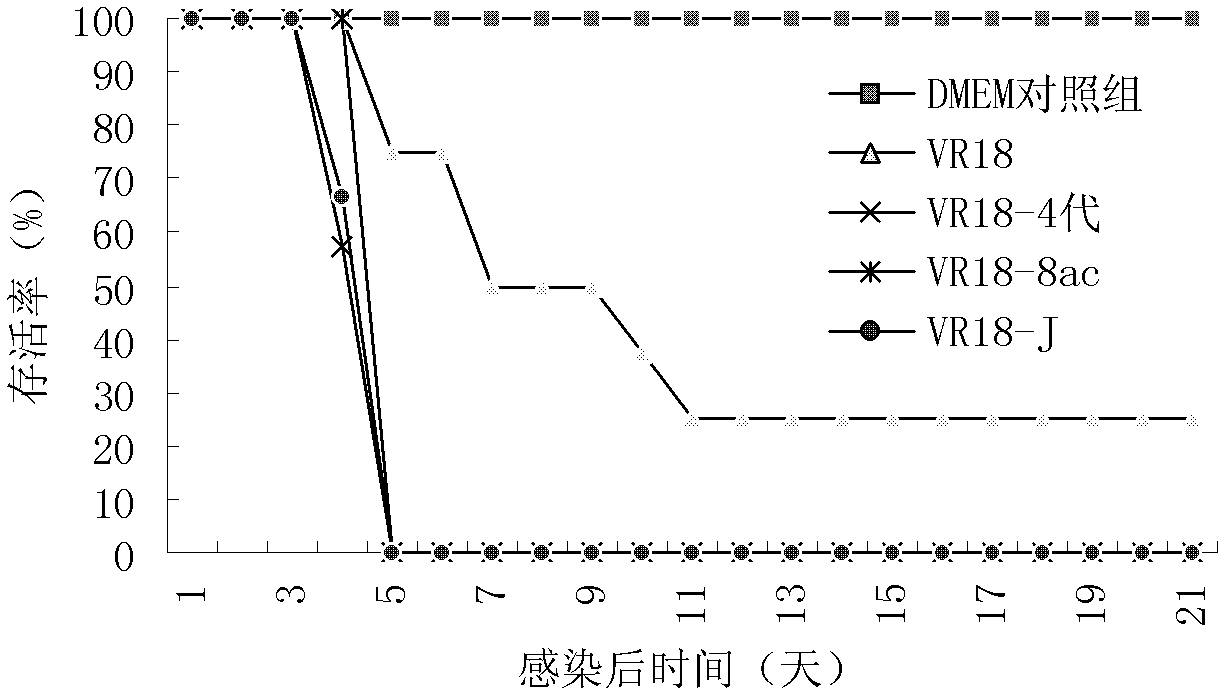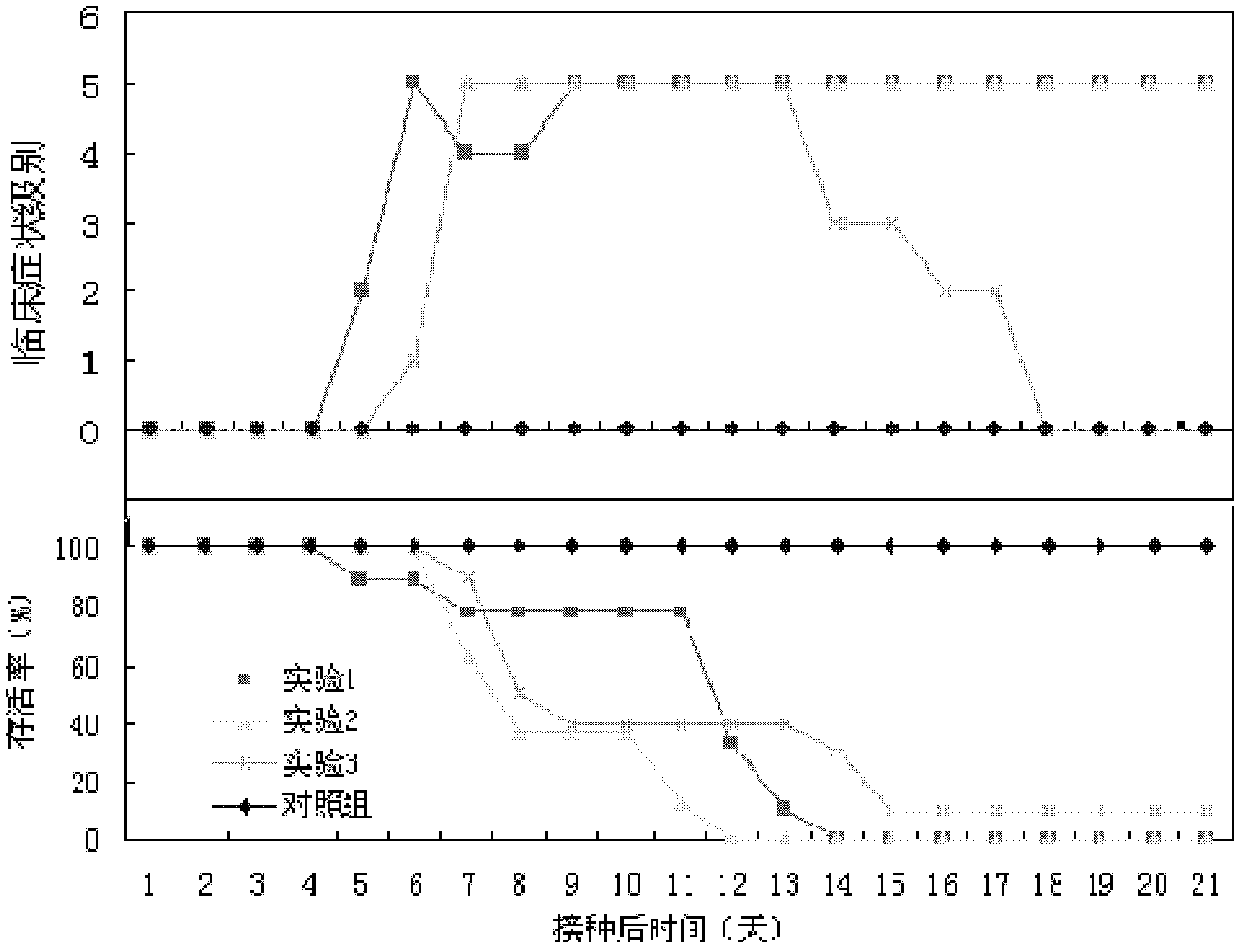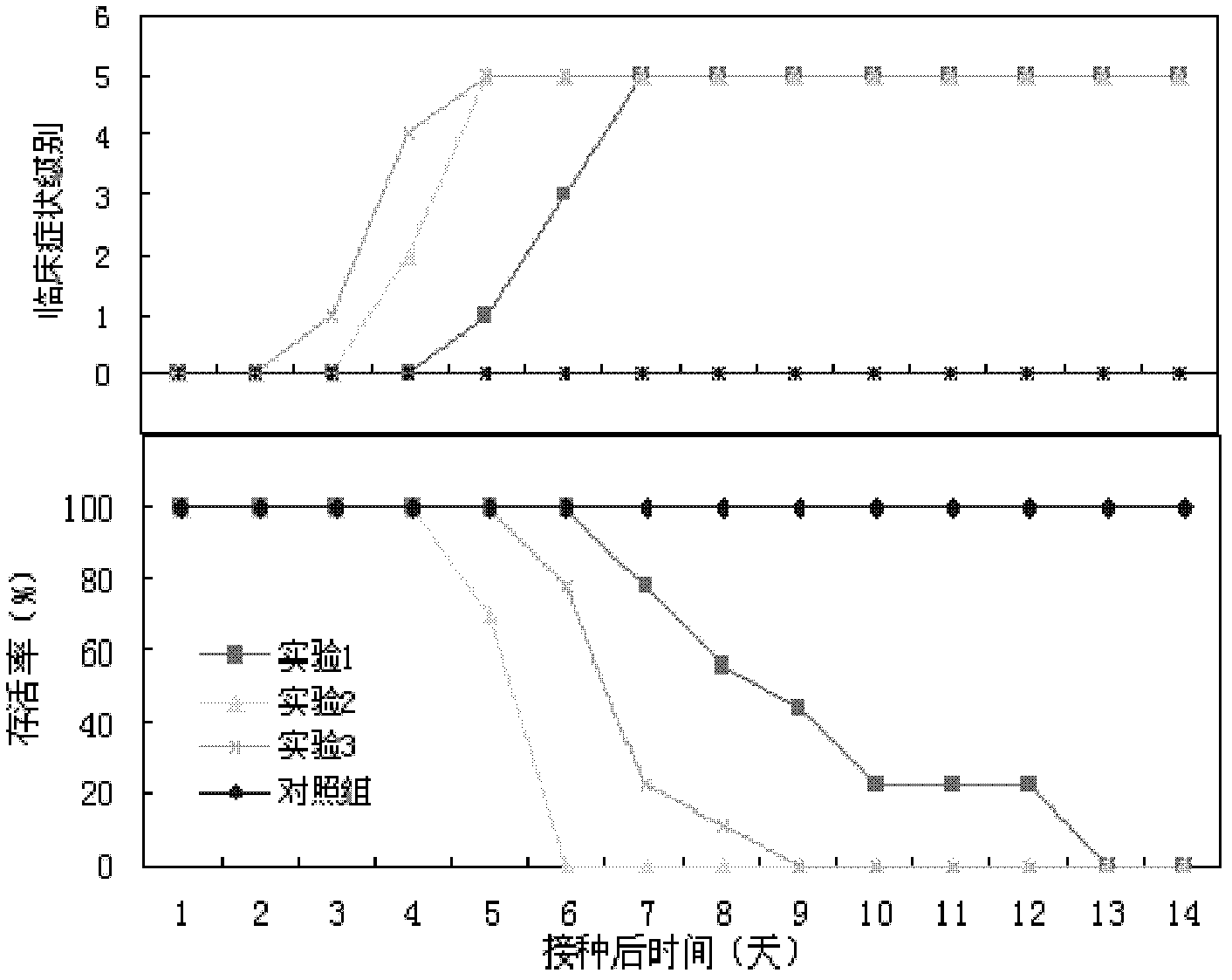Method and kit for establishing ca16 virus infection animal model
A virus infection and animal model technology, applied in the fields of virology and immunology, can solve problems such as the successful establishment and application of CA16-free animal models, and the impact on the evaluation of vaccine protection effects, to achieve clear clinical symptoms, clear attack virus background, and good dosage effect of dependence
- Summary
- Abstract
- Description
- Claims
- Application Information
AI Technical Summary
Problems solved by technology
Method used
Image
Examples
Embodiment 1
[0028] The selection of embodiment 1CA16 virus
[0029] According to literature reports, CA virus can cause systemic myositis and death in newborn suckling mice within 1 day of age through intracranial infection. The second VR18 (VR18, VR18-4), two consecutive generations of plaque-purified VR18 (VR18-8ac) and one generation of mouse brain purified VR18 (VR18-J) were used for intracranial infection research. The results showed that VR18-4, VR18- Both 8ac and VR18-J caused paralysis of hindlimbs in model animals 4 days after infection, and all died 5 days after infection. The symptoms of VR18-infected animals were relatively mild, and hindlimb paralysis began to occur 4 days after infection, and 14 days after infection, except for 2 animals that gradually recovered after the onset of the disease, all the remaining 6 animals died, and the mortality rate was 75% (see figure 1 ). The results showed that different passages of VR18 and VR18 obtained by different purification metho...
Embodiment 2
[0030] The selection of embodiment 2 infection mode
[0031] The same dose of VR18-8ac virus strain was used to infect neonatal ICR suckling mice within 1 day of age respectively intracranially, intraperitoneally and orally. Results The death rates of the three infection modes were 100%, 100%, and 67% respectively; the onset time was 4d, 4d, and 5d; the total death time was 5d, 4d, and 12d (see Table 1). It was shown that all three kinds of infection ways could cause disease and death of model animals to varying degrees, and both intracranial and abdominal ways could cause 100% mortality in a short period of time after infection. Since intracranial inoculation of 1-day-old suckling mice is easier to operate than intraperitoneal inoculation, intracranial inoculation is preferred to construct the CA16 infection model.
[0032] Table 1 Comparison of different infection modes
[0033]
Embodiment 3
[0034] The selection of embodiment 3 suckling mouse age
[0035] Using intracranial infection, the same dose of VR18-8ac virus strain was inoculated into newborn ICR mice at 1, 3, 5, 7, and 14 days of age. As a result, it can be seen from Table 2 that VR18 can make all the newborn ICR mice of 1-5 days of age morbidity and death, and the time of morbidity and death prolongs with the growth of the mice's day age; % developed the disease, but some mice gradually recovered after the disease, and the case fatality rate was 67%; 14-21 days old mice did not suffer from the disease and died. Therefore, it is preferable to construct the CA16 infection model in 1-day-old suckling mice.
[0036] Table 2 Comparison of different infection ages
[0037]
PUM
 Login to View More
Login to View More Abstract
Description
Claims
Application Information
 Login to View More
Login to View More - R&D
- Intellectual Property
- Life Sciences
- Materials
- Tech Scout
- Unparalleled Data Quality
- Higher Quality Content
- 60% Fewer Hallucinations
Browse by: Latest US Patents, China's latest patents, Technical Efficacy Thesaurus, Application Domain, Technology Topic, Popular Technical Reports.
© 2025 PatSnap. All rights reserved.Legal|Privacy policy|Modern Slavery Act Transparency Statement|Sitemap|About US| Contact US: help@patsnap.com



